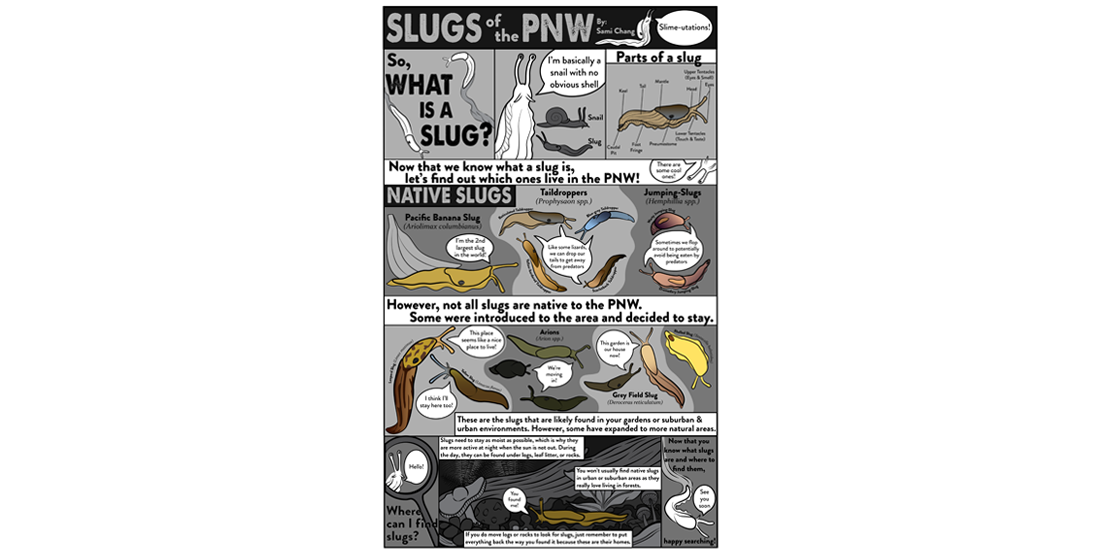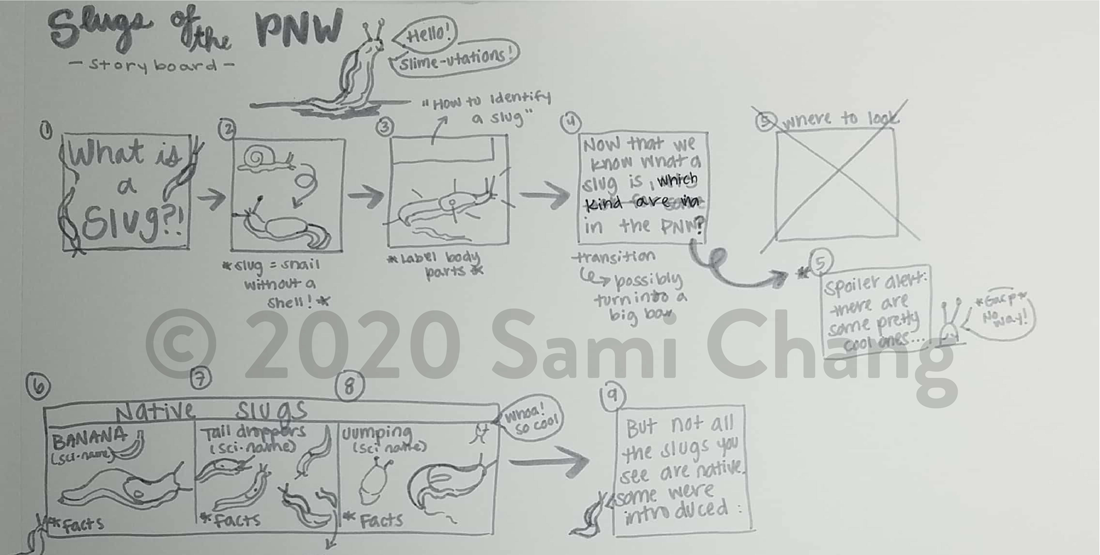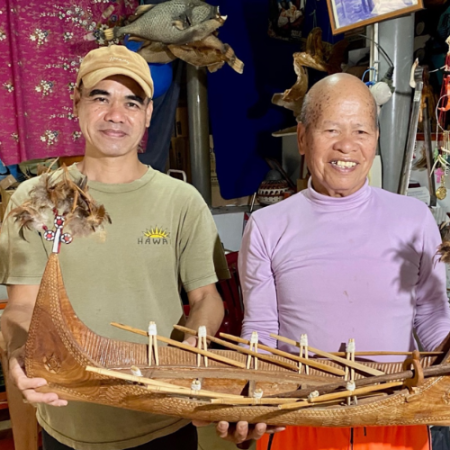“Art really helps people learn more about what’s around us.” —Sami Chang
Mollusc Masterpieces
Sami illustrated the word MOLLUSCA, with every letter of the word representing a different mollusc group: M – Bivalvia, O – Monoplacophora, L – Scaphopoda, L – Solenogastres, U – Polyplacophora,
S – Caudofoveata, C – Cephalopoda, A – Gastropoda.
Slugs of the PNW is a comic which introduces readers to the types of slugs living in the Pacific Northwest and where they can be found.
About Sami Chang
Growing up near San Francisco, Sami always loved water and sea creatures, traveling frequently to the local tide pools and the Monterey Bay Aquarium. Her early interest in the ocean and environmental science led her to study marine biology in college—she wanted to teach others about the importance of the ocean and how to protect it.
Sami was also always drawing—in sketchbooks, on napkins—and eventually realized she could connect her background in science with her artistic talent. Encouraged by her friends and professors, Sami pursued science illustration, using her art as a valuable tool to teach others about the marine creatures she found so fascinating.
Graphite pencils, pen and ink, and watercolor are Sami’s favorite traditional media. However, as institutions began creating digital content to serve their audiences during the COVID-19 pandemic, her goal for her work with the Burke was to create pieces digitally to allow for a more versatile experience that translated well digitally.
When they began working together, Melissa suggested Sami work on an illustration to represent the amazing biodiversity of molluscs. After growing up and living on the west coast, Sami decided to highlight many species of the Pacific Northwest.
To see more of Sami’s stunning work visit schangstudios.com and follow @schang.studios on Instagram.
Want to learn more?
The Malacology Collection at the Burke Museum houses more than 150,000 specimens, representing a broad diversity of modern molluscs collected from around the world.
Molluscs are everywhere—they can be found in water and on land! Use iNaturalist to see the creatures your neighbors have identified where you live, and ask for help identifying creatures that you find.







